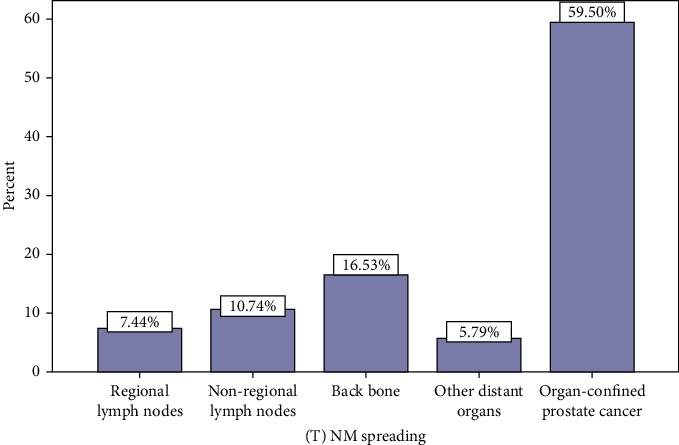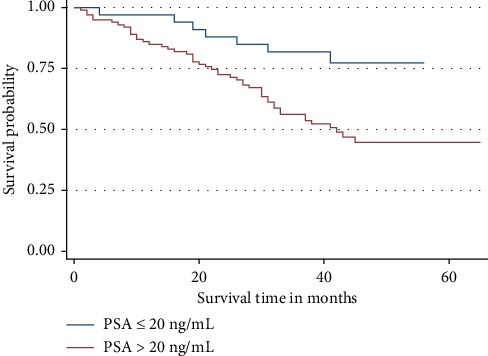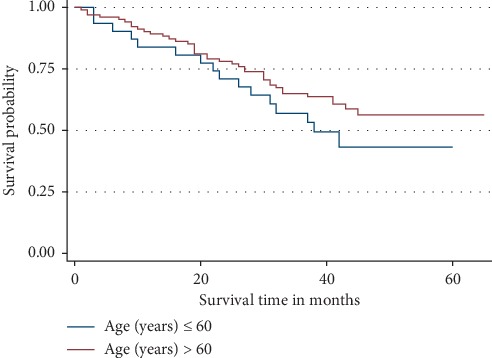Prognostic Factors for Overall Survival of Patients with Prostate Cancer in Kyadondo County, Uganda.
IF 2
Q3 ONCOLOGY
引用次数: 7
Abstract
Background Prostate cancer is the second most common cancer among men globally. A few studies that have been done in Uganda on survival of patients with prostate cancer indicate that, the overall survival of patients with prostate cancer in Uganda is poor. The aim of this study was to determine the 3-year overall survival rate of a cohort of patients with prostate cancer residing in Kyadondo County who were diagnosed from 2012 to 2014. The secondary objective was to correlate the overall survival with the clinicopathological prognostic factors. Materials and Methods This was a retrospective cohort study which involved 136 patients who were diagnosed histologically with prostate cancer at the department of pathology between 2012 and 2014. The cases were registered at the Kampala cancer registry and followed up to 31st December 2017. Data analysis was done using STATA version 12.0. The Kaplan-Meir curves were used for analysis of the 3-year overall survival rate. Hazard ratio (HR) and Log-rank test at 95% confidence interval under Cox-regression model were used to evaluate the effect of the covariates on the 3-year overall survival rate. p < 0.05 was considered statistically significant. Results More than half of the cases, 55.9% (n = 76) had Gleason score >8. Most of the patients, 67.7% (n = 92) had advanced disease at diagnosis. The 3-year overall survival rate was 67.6% with median survival of 36.5 months and range of 0–65 months. Clinical stage of the patients (HR = 1.65, p = 0.039), Gleason score (HR = 1.88, p = 0.008), and lymphovascular invasion (HR = 0.37, p = 0.002) were the independent predictors of the 3-year overall survival rate in this study. Conclusion. The 3-year overall survival of prostate cancer patients in Uganda is poor. Most of the patients with are diagnosed with advanced clinical stages (stage III and IV). The Gleason score, clinical stage and lymphovascular invasion can powerfully predict independently the overall survival of patients with prostate cancer. This implies that the Gleason score, clinical stage and lymphovascular invasion may be used to predict the overall survival of patients with prostate cancer even prior prostatectomy.



乌干达Kyadondo县前列腺癌患者总生存率的预后因素
背景:前列腺癌是全球男性中第二常见的癌症。在乌干达进行的一些关于前列腺癌患者生存率的研究表明,乌干达前列腺癌患者的总体生存率很低。本研究的目的是确定2012年至2014年Kyadondo县诊断的前列腺癌患者队列的3年总生存率。次要目的是将总生存率与临床病理预后因素联系起来。材料与方法:本研究为回顾性队列研究,纳入2012年至2014年在病理科经组织学诊断为前列腺癌的136例患者。这些病例在坎帕拉癌症登记处登记,并随访至2017年12月31日。数据分析使用STATA 12.0版本。Kaplan-Meir曲线分析3年总生存率。采用cox回归模型下95%置信区间的风险比(HR)和Log-rank检验评价协变量对3年总生存率的影响。P < 0.05为差异有统计学意义。结果:超过一半的病例,55.9%(76例)Gleason评分>8。绝大多数患者(67.7%,92例)在诊断时病情已进展。3年总生存率为67.6%,中位生存期为36.5个月,0-65个月。患者临床分期(HR = 1.65, p = 0.039)、Gleason评分(HR = 1.88, p = 0.008)、淋巴血管浸润(HR = 0.37, p = 0.002)是本研究3年总生存率的独立预测因素。结论。乌干达前列腺癌患者的3年总体生存率很低。大多数患者诊断为晚期临床阶段(III期和IV期),Gleason评分、临床分期和淋巴血管侵袭可以独立预测前列腺癌患者的总生存期。这表明Gleason评分、临床分期和淋巴血管侵袭可用于预测前列腺癌患者的总体生存,甚至可以用于前列腺切除术。
本文章由计算机程序翻译,如有差异,请以英文原文为准。
求助全文
约1分钟内获得全文
求助全文
来源期刊

Prostate Cancer
ONCOLOGY-
CiteScore
2.70
自引率
0.00%
发文量
9
审稿时长
13 weeks
期刊介绍:
Prostate Cancer is a peer-reviewed, Open Access journal that provides a multidisciplinary platform for scientists, surgeons, oncologists and clinicians working on prostate cancer. The journal publishes original research articles, review articles, and clinical studies related to the diagnosis, surgery, radiotherapy, drug discovery and medical management of the disease.
 求助内容:
求助内容: 应助结果提醒方式:
应助结果提醒方式:


